Buyer’s Guide Jaguar XJS
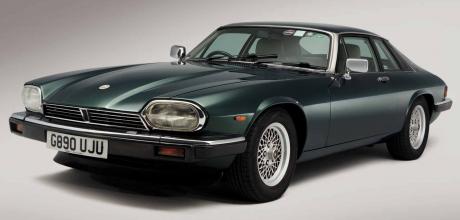
The Jaguar XJ-S picked up where the Jaguar E-type (XKE) left off, but the new car was never supposed to be a replacement for the old. Whereas the E-type was launched as a sports car and it morphed into a GT, the XJ-S was conceived and developed as a cruiser. It was never meant to be sporting as such, although with a 5.3-litre V12 in the nose, the XJ-S was never going to be short of performance.
ULTIMATE GUIDE Jaguar XJS
Words: Richard Dredge
Pictures: John Colley
JAGUAR XJS: ultimate guide to coventry’s GT
For years, the XJS lived in the E-type’s shadow, largely because of its less glamorous styling, but for a long time now the later car has been seen for what it is: a brilliant mile-muncher that’s aged gracefully. As a result, values have been increasing for a while, but this is still a car that can represent spectacular value. However, if you buy badly you could end up with a money-pit because there are lots of potential pitfalls, and repair costs can be high. But there are more cherished XJSs out there than ever, and if you buy well you’ll have a superb long-distance cruiser for relative buttons. Incidentally, Jaguar launched its GT as the XJ-S, but in 1991 the name was tidied up to become the XJS. To avoid confusion we’ll generally refer to the car as the XJS throughout, unless we’re talking specifically about an earlier model.
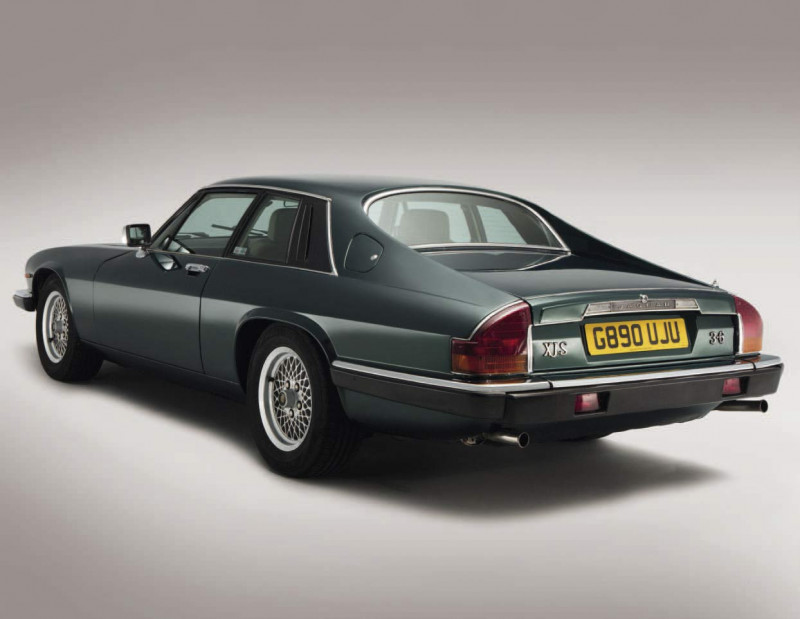
The XJS market
After decades in the doldrums, XJS values have been on the rise for a while. It’s the usual story: many examples were scrapped long ago, and some editions – including some of the most sought-after – are now particularly rare. Anecdotally, in the UK there’s a fairly even split between V12s and six-cylinder cars, there are three times as many coupés as cabriolets/convertibles, and autos are much more common than manuals. In the US the V12 was by far the most popular engine, and a lot more convertibles were sold than coupés. Now, UK buyers favour open-topped cars.
XJS expert Andy Harvey, of justxjs.com, comments: “Values are all over the place, so you must shop around. The earliest cars have become extremely sought after for the purity of their design; a few years ago nobody wanted them. These pre-HE V12 coupés are now being bought for occasional use or investment, with manual-gearbox models particularly desirable. A concours manual example might fetch £50,000, although £30,000-£35,000 is more realistic. Just 19 such cars are known of though, of the 356 made.”
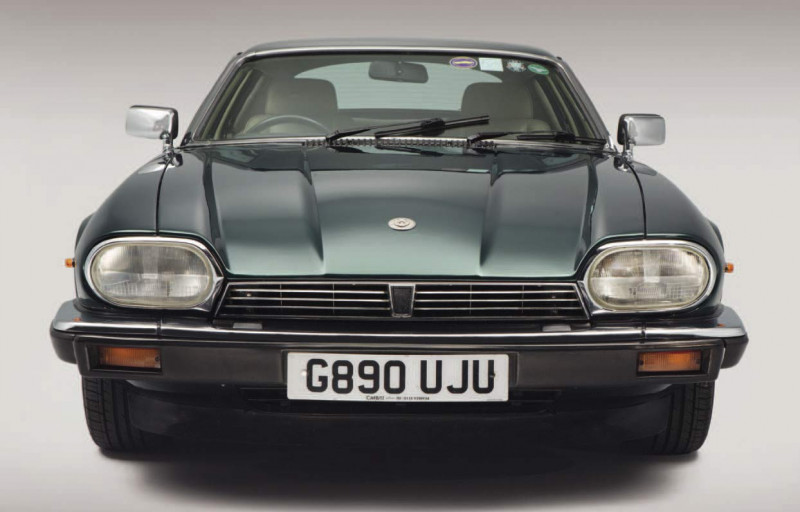
If £50k seems a bit rich, don’t fret because you can buy an XJS from just £5000. This secures a running 3.6 automatic coupé, with even the best examples worth only £10,000 or so. Just 104 automatic 3.6-litre cabriolets (XJS-Cs) were made, and of those a mere 20 or so survive; find one and you’ll pay maybe £5000 for a restoration project, or twice this for a roadworthy car. The 3.6 XJS-C with a manual gearbox is easier to find (but still rare); decent examples are worth £8000- £10,000. Incidentally, Andy reckons that the cabriolet is better than the convertible because it’s far stiffer, but buyers much prefer the later model.
There are plenty of pre-facelift V12 convertibles to go round, but facelifted cars are less common; XJS buyers generally prefer the updated cars. Worthwhile opentopped V12s (early or late) start at £10,000 and run to £25,000 for something really nice. This is also the spread of values for the 4.0-litre convertible, whereas a 6.0-litre convertible can fetch £40,000 as they’re so unusual. Most of these went to the US, but some are finding their way back to the UK now. On that note, it’s not usually worth importing an XJS from Europe or the US, because there are enough good right-hand drive examples of most models here. Converting to RHD is a nightmare (not least of all because you need a suitable donor car), and people generally want something that’s as original as possible.
Key checks: bodywork
Most early cars were scrapped long ago because of low values, significant corrosion and high restoration costs. You’ll be doing well to find an XJS that’s rust-free and unrestored; the bottom three inches of the XJS are especially susceptible to corrosion. Later cars survive in bigger numbers because Jaguar used a galvanised bodyshell from 1994, but scrutinise any potential purchase carefully because repair costs can be high. Put the car on a ramp to have a good look underneath.
Structural corrosion is common, so analyse the seam between the sills and floorpans. Three panels meet here, so the floorpans have to be replaced, which is why it costs upwards of £2500 per side to put things right. The front footwells rust from the inside because of water leaks into the cabin. This area is integral with the jacking point, so it’s complicated to repair, which is why specialists charge around £1800 per side. The inner and outer sills rot, along with the radius arm mountings, which can result in rear-wheel steering. Effective repairs cost £1800 or so per side. A rotten front subframe isn’t unusual, and fixing this properly can be expensive because the suspension and brakes are often overhauled at the same time. Fixing only the subframe costs £2000, but also overhaul the suspension and brakes and the cost doubles.
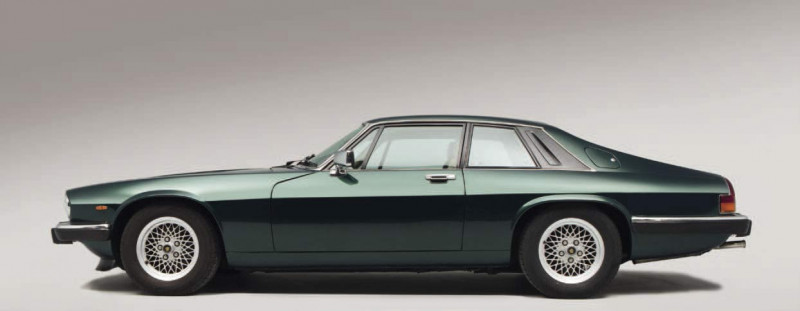
Corrosion in the windscreen surround is also common, especially at the bottom. Water gets underneath the screen and dissolves the metal out of sight, while on facelifted cars aluminium pop rivets were used, and these react with the steel bodywork. If the bodywork has already corroded you’ll need to get the metalwork repaired for about £3500 (the dashboard has to come out), but you might get away with removing the windscreen, cleaning and painting the metal, then resealing everything. This costs a few hundred pounds, but things have usually progressed beyond this stage by the time you notice anything amiss.
Even if the structure is sound, all outer panels can rust, with replacements generally unavailable, although some repair sections can be sourced. The bolt-on front wings corrode down their trailing edge, but repair sections are available. More of a problem is rust around the top of the headlights, because if this is significant the wing is probably beyond saving.
Other corrosion hot spots include the front valance, the front and rear wheelarches (inner and outer), the rear valance and the trailing edge of the bootlid. Repair panels are available for most of these from xjspanelshop.co.uk. Also check the double-skinned shock absorber mounts on the inner front wings. Repairs here involve dropping the front subframe, but it’s not too costly at £1000 or so for both sides. While you’re at it you’ll probably want to spend another £600 on some fresh bushes.
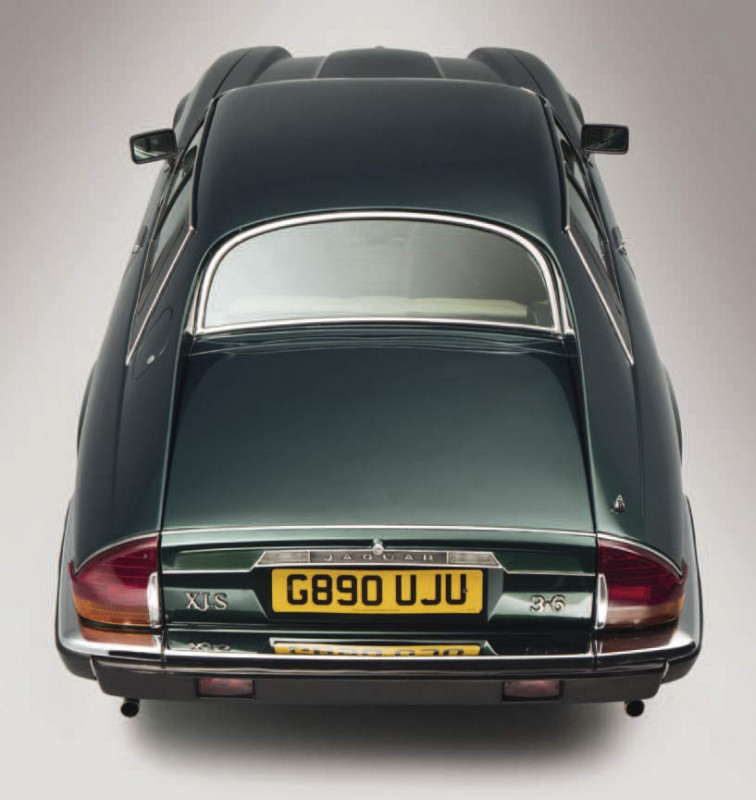
The boot-mounted battery can leak acid, which leads to holes in the boot floor. Also make sure the car hasn’t been jacked up by the floorpans, as damage is guaranteed. The rubber bumpers fitted to early cars are no longer available, but it’s possible to revive tired original units. Some owners have opted to fit bodykits or JaguarSport items as a work-around; something that grates with purists.
Open-topped cars aren’t inherently leaky, but extra analysis behind the front seats is worthwhile, just in case it’s all gone a bit crusty. Pre-1991 cars weren’t as stiff as later examples, so constant body flexing can mean the door shutlines are poor.
Key checks: mechanicals
Jaguar introduced a six-cylinder XJ-S in 1983, but until then only a 5.3-litre V12 engine was available. This was always fuel injected, which brought relative economy (15mpg on a run), but the fitment of redesigned cylinder heads (dubbed HE, or High Efficiency) in 1981 brought the prospect of 20mpg within reach. When the 5.3-litre engine gave way to a 6.0-litre unit in 1993, a new engine management system meant that despite the bigger displacement for extra power and torque, improved economy was also part of the mix.
All engine parts are available and despite the complexity of both six and 12-cylinder units, DIY maintenance is straightforward. However, swapping the spark plugs on 5.3-litre cars takes up to three hours on its own…
An AJ6 straight-six engine was introduced in 1983. At first it displaced 3.6 litres, but this grew to 4.0 litres in 1991. The engine was revised in 1994 to become the AJ16, when a new ignition and engine management system were adopted, along with redesigned pistons and other refinements. Whereas the 3.6-litre XJS has an external fuel pump, the 4.0-litre’s pump is in the tank. As a result it takes six hours to replace instead of 30 minutes.
The six-cylinder engines are reliable if serviced, but overheating and internal corrosion result from anti-freeze levels not being maintained. The area in front of the radiator must be kept clear of leaves and other debris which reduce the radiator’s efficiency and leads to overheating. The most common AJ6 and AJ16 problem is blown head gaskets around the 100,000-mile mark, so check for white emulsion on the underside of the oil filler cap.
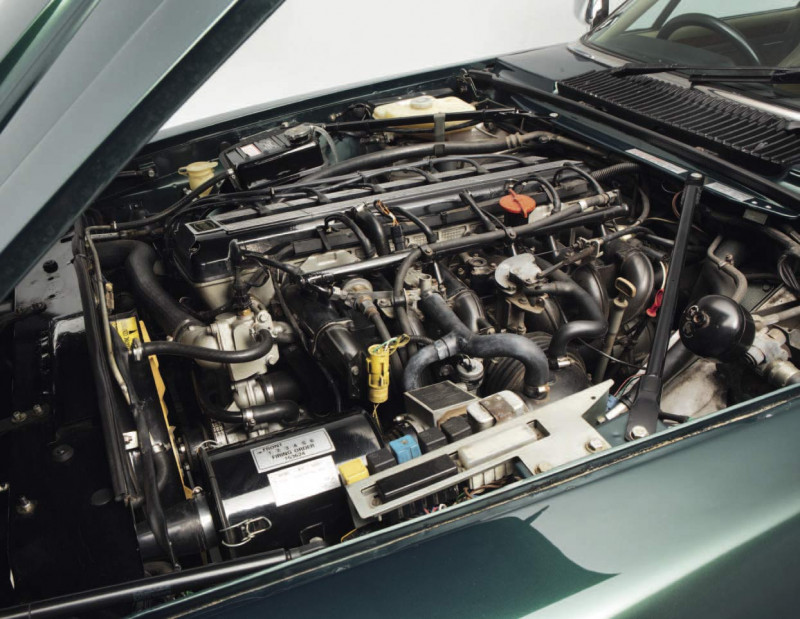
The V12 engine will happily dismiss 250,000 miles, but a lack of maintenance leads to overheating, so idle the engine for several minutes and watch the temperature gauge. Harshness points to previous overheating; the block and heads can distort through high temperatures. These are made of alloy, so anti-freeze levels must be maintained or internal corrosion is guaranteed, leading to even worse overheating.
Low oil pressure at idle isn’t a problem, but there should be at least 45lb (preferably 55lb) at 2500rpm. Oil leaks are common as the rear crankshaft seal leaks; cars used infrequently are especially likely to suffer from this, as the seal dries out then wears more readily. Early engines will need to be rebuilt, but from 1986 the seal could be replaced by removing the gearbox and flywheel, allowing a small plate holding the seal to be unbolted from the rear of the crankshaft, reducing costs enormously.
Various manual and automatic transmissions were fitted over the years, with the latter by far the most popular in period. Manual cars now have a strong following partly because of their rarity, but the four-speed unit in the earliest V12s is geared too low; there’s no overdrive and top gear doesn’t allow relaxed cruising.
None of the transmissions are weak, and while the manuals are now popular, the autos suit the XJS’s character far better. The pinion seals on the diff can leak, but this can be fixed on a DIY basis; allow three hours to do the work if the diff stays in the car.
If kept topped up with oil no diff damage will result, but if things are really bad the oil will get onto the inboard brakes of pre-1993 cars. By this point the whole back end needs an overhaul; budget £1200 for new discs, pads and handbrake pads. The handbrake has to be engaged to drop the roof of a convertible, but owners have a habit of driving off with the handbrake still on, which wrecks the pads, and they’re a nightmare to replace.
The XJS’s steering rack is strong, but its mounts are not, especially on V12s. The mounts perish, so check for play; rubber or polyurethane replacements are available. Budget £300 to drop the rack and fit new bushes.
Jaguars are renowned for their sublime ride, so anything less than a magic carpet sensation suggests something is awry. The XJS’s weight takes its toll on the springs and dampers, while the various bushes also take a hammering. Everything is available, but if a complete overhaul is needed you could spend anything between £1000 and £2000.
The rear suspension’s radius arms can also be problematic, as their bushes wear and the arms corrode. Genuine replacements (with bushes) are £200 apiece; pattern ones are available, but the quality is variable.
All XJSs came with alloy wheels, some of which are now scarce. Corrosion is a probability, but any of the wheels can be refurbished. If you’re keen on originality, make sure the correct wheels are fitted; it’s common for owners to fit later wheels or aftermarket items, but most original designs are available on a used basis.
An all-disc braking system featured on all XJSs, and it should inspire confidence even when pushed hard. Until 1993 there was an in-board system at the rear, guaranteeing accessibility issues and making maintenance difficult. As a result, a lot of cars could be suffering from worn discs or pads at the back, and possibly both. The lack of access to the braking system is the reason why the handbrake might need to be adjusted; to renew the handbrake pads you have to remove the calipers, which is a nightmare.
Anti-lock brakes were fitted from 1988; make sure the ABS warning light comes on when the ignition is switched on, because if the light doesn’t then go out it’s an automatic MoT fail. Replacement ABS sensors are £25 each.
Key checks: trim and electrics
All XJSs came with leather trim, which wears well. Cracking can occur, but some hide food usually revives things. The weakest area is the offside of the driver’s seat, where the piping gets damaged from regular contact with the seatbelt. The air-con drains can block up, forcing water to spill through the centre console where it then sits under the carpets in the front footwells. Check for rotten carpets; a new set costs about £400.
Pre-HE XJSs didn’t have much exterior brightwork, but later cars do. Make sure it’s all there because while it doesn’t damage easily, it’s costly to replace.
The convertible’s electro-hydraulics are reliable and the roof wears well, but there’s a checkstrap that holds the rear window in place when the roof is lowered, and its rivets can corrode then fall out. On post-1994 cars (which featured rear seats), the window then tears the rear seats when the roof is stowed.
Pre-facelift cars were fitted with switchgear which can be very unreliable, so check that everything works; it’s generally available on a used basis. Post-1991 cars have higher quality components fitted, so they’re more reliable. Air-con systems can be unreliable as the condensor, compressor, drier and electrics can all give problems. It’s all fixable, but costs can quickly mount.
Restoring
Andy Harvey told us: “A lot of people who buy a cheap XJS to restore, end up getting things wrong. Rust is the biggest problem and the XJS’s construction isn’t straightforward, so it’s easy to mess it up. It doesn’t help that panel availability is generally poor, although high-quality repair sections are available from the XJS Panel Shop.
“People tend to buy the shiny bits to make their XJS look nice, without doing the groundwork to make sure that it’s structurally sound first. But the bottom line is that unless you’re an experienced welder you’ll probably struggle to properly repair a rusty XJS, with uneven panel fit highly likely.” Original panels occasionally crop up, but they’re very pricey when they do; it’s easy to pay £500 just for a sill. All service parts are readily available, but there are XJSs that are being kept off the road because of poor parts supply.
Andy adds: “The quality of the parts that are available is variable, although anything made in the UK is usually very good. Poor-quality suspension components is just one example of how you can get stung; some pattern springs will leave your XJS riding two inches too high, wrecking the dynamics. On that note, working on the suspension requires a few special tools, although it’s possible to hire these.”
With many new parts in short supply, buying used is an obvious answer, but that’s often not possible. Andy continues: “I used to buy running cars for £250, but that went up to at least £1500 a few years ago. That’s when I went from breaking to fixing; it started to make sense to revive a tatty XJS and few of these cars are now being broken. I used to throw away parts because I had so many, but now there are some bits that I can’t get hold of at any price. I’d say that maybe 75% of XJS parts are available in one way or another, but it’s the other 25% that could cause problems.
“On later cars the main problem is the ABS module. If you don’t change your brake fluid every two years, the six solenoids inside the module corrode. It doesn’t help that these cars are usually driven sedately and the ABS is rarely acivated. The modules can be overhauled, but for every three blocks that I get in, only one is repairable. Meanwhile, the rear light lenses of facelifted XJSs are now extremely rare, and if you fry an AJ-16 ECU, good luck finding a replacement.”
Improving
A word of warning from Andy Harvey: “People want their XJSs to be as original as possible, and while it’s up to the individual to have their car how they want it, if it’s significantly modified you’ll probably struggle to sell it.”
Typical mods include TWR bodykits and aftermarket wheels, especially those made by Fondmetal. A quad headlight conversion is acceptable to some because the original headlights aren’t generally available. When they do crop up they’re usually around £600 per set, which is about the same as a quad conversion.
If you do modify your XJS, make sure that the changes are reversible and that you keep the original parts. Suspension updates often don’t work because Jaguar did a pretty good job. Poly bushes make the ride very harsh, and most parts that sharpen up the handling will damage the ride.
One upgrade that is popular and acceptable is a five-speed manual gearbox conversion for the XJS V12, to replace the three-speed auto or four-speed manual transmission. There are various options, but they all cost around £2500-£3500 for a kit.
I Bought One
Steve Gilligan bought the 1989 XJ-S 3.6 pictured, in 2017. He comments: “I’ve loved the XJS since I was a teenager, and as soon as I could buy one I did, having researched things thoroughly. I realised that I wanted a pre-facelift 3.6 as they’re easier to maintain; I do most of the work myself. I also bought a car that needed some tidying, to reduce purchase costs and because I enjoy getting my hands dirty.
“My original plan was to use the car every day, but then I realised that the running costs would be too high. It still does about 5000 miles each year though. Since I bought my XJ-S I’ve replaced some panelwork because of rust, fitted a brand new engine and gearbox – those were quite a find! – and overhauled the brakes. My intention this winter is to rebuild the rear suspension.
“If I was doing it all again I wouldn’t do it any differently. The key is to stick with OE parts where possible, to guarantee quality. Availability is generally good, and working on the car is easy enough, although I’ve had to invest in a few special tools. This isn’t essential however, as the owners’ clubs have schemes that allow you to hire any tools that you’re like to need.”
The best XJS for you
It’s the six-cylinder cars that make the most sense, but if you want to really indulge yourself, nothing less than a V12-powered XJS will do. However, twice the cylinder count generally means twice the running costs, so unless you have a healthy contingency fund, be very careful before buying a 12-pot car.
As the XJS evolved, it became more usable and maintenance costs reduced massively, especially where six-cylinder editions are concerned. As Andy Harvey says: “Practical buyers want six-cylinder XJSs because they’re easier to maintain and cheaper to run, whereas collectors and those who use their cars sparingly will want a V12. A 4.0-litre auto is the best XJS for regular use, as it’s built to a higher standard and it has more oomph than the 3.6-litre models. By the time the 4.0-litre cars were being built, Ford was in charge, which meant more reliable electrics.”
“The Lancaster Team loves an old-school Jag; our Car Club Manager has one. We’re insurance partners to the XJS Owners’ Club, so we cover a number of these elegant grand tourers. Prices are on the up, but they still remain excellent value for money.
“There are a number of marque specialists around. Clarke’s XJS World in West Sussex has some of the finest XJSs that I’ve seen. We would suggest exploring an agreed-value policy, which agrees the value of the car up front, so that the true value of the car would be realised should the worst happen.”
Andrew Evanson Senior Operations Manager at Lancaster Insurance
Key Specialists
- Just XJS, Derbyshire 07940 998 199 justxjs.com
- Clarke’s XJS World Kent 01435 863 800 clarkesjaguar.co.uk
- David Manners Birmingham 0121 544 4040 jagspares.co.uk
- KWE, Berkshire 01635 300 30 kwecars.com
- SNG Barratt Shropshire 01746 765 432 sngbarratt.com
- XJS Panel Shop Northamptonshire 01327 341 321 xjspanelshop.co.uk
- XJS Workshop, West Midlands 01527 893 733
XJS EVOLUTION
- 1975 The XJ-S replaces the E-type; the new arrival is offered in V12 form only.
- 1977 The Borg Warner automatic gearbox is replaced by a three-speed GM400 unit.
- 1979 The manual gearbox option is dropped, with just 356 made.
- 1980 P-Jetronic single-rail electronic fuel injection replaces the twin-rail system, to give more power.
- 1981 The HE (High Efficiency) engine debuts.
- 1983 A six-cylinder engine is introduced, with a 3.6-litre capacity. The XJS-C cabriolet also debuts.
- 1985 The XJS-C is now offered with V12 power.
- 1987 The 3.6 cabriolet is discontinued.
- 1988 The convertible replaces the XJS-C, with V12 power only, and the XJR-S 5.3 arrives in coupé form only. It’s a V12 with firmer suspension and a bodykit.
- 1989 The XJR-S gets a 6.0 V12 and 318bhp.
- 1991 A facelift brings a redesigned cabin, a restyled rear end and revised side glass. The model name also changes from XJ-S to XJS.
- 1992 A 4.0-litre straight-six supersedes the 3.6 edition, with auto option and a choice of coupé or convertible body styles.
- 1993 A 6.0 V12 engine is now available, with a four-speed automatic transmission. The final XJR-S is built.
- 1994 The 4.0 AJ6 engine gets an overhaul to become the AJ16 unit.
- 1995 The final XJS V12 is made.
- 1996 The last six-cylinder XJS is built, as the XK8 comes on stream. That final XJS is car number 115,413.
REAL CARS FOR SALE
- £4995 1991 XJS 3.6 coupé. Full service history, no visible corrosion. New headlining, dampers, brake discs. No MoT.
- £16,950 1989 XJS V12 convertible. Three owners, 37,600 miles, full service history. Pale metallic blue paint, beige leather trim.
- £26,850 1995 XJS 4.0 convertible. All original documentation, full service history, 56,848 miles. Blue paint, cream leather trim.
OUR EXPERT
In 1996 Andy Harvey bought his first XJ-S (a pre-HE), then in 2005 a 3.6 auto followed. This looked great, but it needed so much work that Andy had to source a donor car, which was stored on a relative’s farm. A series of other breakers followed, and when redundancy from his engineering job hit in 2012, Andy made the leap into working solely on XJSs. Having invested in premises, the focus was initially on supplying used parts, but over the past five years the emphasis has been more on maintenance. Andy offers mechanical, electrical, and bodywork fixes, but not full restorations, and just like all of the best specialists, Andy has five cars of his own: a facelifted 6.0 XJR-S coupé, a 3.6 manual cabriolet, a V12 cabriolet, a four-speed manual pre-HE, plus a 4.0 auto coupé.
Join The Club
- Jaguar Drivers’ Club jaguardriver.co.uk
- Jaguar Enthusiasts’ Club jec.org.uk
- Jaguar XJS Club xjsclub.org
THANKS TO Andy Harvey of Just XJS, and Steve Gilligan, owner of the car pictured.
| Vital statistics | XJS 3.6 coupe | XJS-C 3.6 | XJS 3.6 convertible | XJS 4.0 coupe | XJS 4.0 convertible | XJS 5.3 coupe | XJS 5.3 HE coupe | XJS 6.0 coupe | XJS 6.0 convertible | XJS 6.0 XJR-S coupe |
| Engine | 3590cc/6-cyl | 3590cc/6-cyl | 3590cc/6-cyl | 3980cc/6-cyl | 3980cc/6-cyl | 5343cc/V12 | 5343cc/V12 | 5994cc/V12 | 5994cc/V12 | 5994cc/V12 |
| Power (bhp@rpm) | 228@5300 | 228@5300 | 228@5300 | 238@4700 | 238@4700 | 285@5500 | 299@5500 | 308@5350 | 308@5350 | 318@5250* |
| Torque (lb/ft@rpm) | 240@4000 | 240@4000 | 240@4000 | 282@4000 | 282@4000 | 294@3500 | 318@3500 | 355@2850 | 355@2850 | 341@3750** |
| Top speed (mph) | 141 | 141 | 141 | 147 | 147 | 153 | 153 | 144 | 144 | 144 |
| 0-60mph (seconds) | 7.4 | 7.4 | 7.4 | 7.6 | 7.6 | 6.7 | 7.5 | 8.0 | 8.0 | 8.0 |
| Consumption (mpg) | 20 | 20 | 20 | 25 | 25 | 14 | 16 | 18 | 18 | 17 |
| Gearbox | 5-sp man/4-sp auto | 5-sp man/4-sp auto | 5-sp man/4-sp auto | 5-sp man/4-sp auto | 5-sp man/4-sp auto | 4-sp man/3-sp auto | 3-speed auto | 4-speed auto | 4-speed auto | 4-speed auto |
| Length (mm) | 4770 | 4770 | 4770 | 4750 | 4750 | 4870 | 4870 | 4820 | 4820 | 4820 |
| Width (mm) | 1790 | 1790 | 1790 | 1790 | 1790 | 1791 | 1791 | 1790 | 1790 | 1790 |
| Height (mm) | 1280 | 1280 | 1280 | 1250 | 1250 | 1260 | 1280 | 1240 | 1240 | 1240 |
| Weight (kg) | 1625 | 1651 | 1835 | 1625 | 1685 | 1750 | 1750 | 1860 | 1985 | 1860 |
| *338@5250 (1991-1993) **365@3650 (1991-1993) |


I am currently restoring a 1994 JAGUAR XJS 4.0-litre coupe. I have just dropped the rear subframe out to change the shock absorbers and generally refurbish the rear end, having just replaced and rebuilt the front subframe. Similar to the front, the rear subframe is corroded in several areas and needs to be changed. I have access to several good pre-facelift rear subframes, but am not sure if they are interchangeable, particularly as the facelift cars have the outboard rear brakes. This is my sixth XJS and I have never come across a rotten rear subframe before because usually there is too much oil from diff’ leaks. However, the car was laid up under a car port for three years on an unsealed concrete hard standing and suffered badly from the alkali fumes rising from the concrete, so much welding was required. Thankfully, the car is excellent – both trim and mechanically – other than needing the suspension rebuilds. I would welcome your advice as to whether the rear subframes are interchangeable with those from prefacelift cars. Many thanks.
Rusty rear sub-frames are indeed rare, cracking around the four diff top mounting bolts being the more common mode of failure. The outboard and inboard subframes are identical and, therefore, interchangeable. XJ6/12 saloons also share the same component and the only minor difference you may encounter is the position of the exhaust mounting brackets. Usually, the alternative captive nuts are present and will simply require thread cleaning.
While on the theme, Terry points out that the corrosion was caused by fumes rising from an unsealed concrete surface (presumably recently laid). This can be likened to parking the car over a mild acid bath, or, indeed, grass. This problem is easily avoided by simply painting the floor, or laying some form of impervious floor covering, such as vinyl. Also, in the unlikely event of an oil leak, mopping up operations are also simplified.